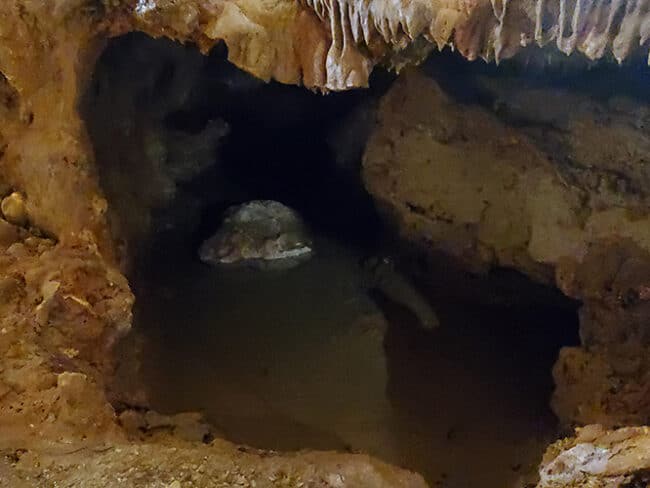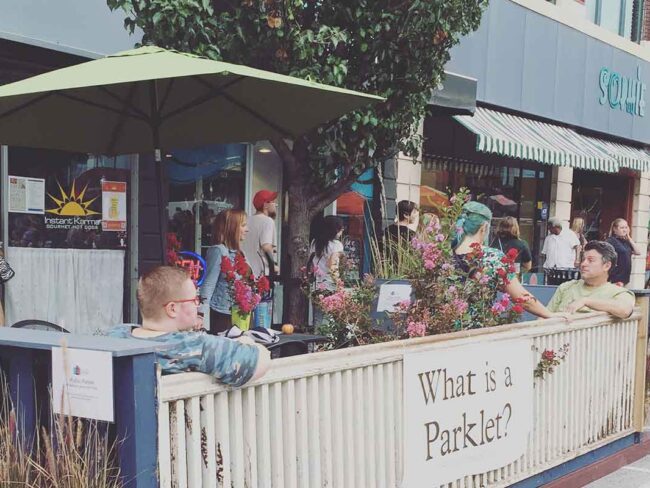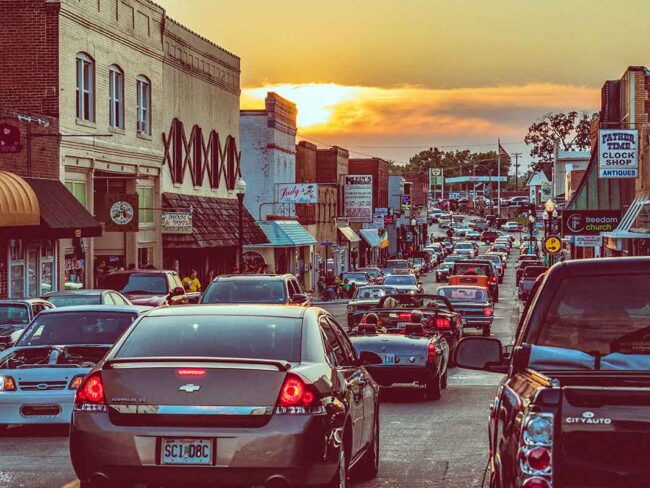Determination pays off for 5 revived Missouri towns
This article originally appeared in the July/August 2022 issue of Missouri Life magazine.
The countryside is dotted with towns that were once thriving places, full of charm and rich in character. Some of these once tight-knit communities are neglected, abandoned, and practically forgotten. Others survive and thrive. They sought ways to strengthen the local economy and offer a better quality of life for residents. They’ve become stronger, more vibrant towns and cities, eager to welcome visitors to shop, explore, and perhaps even consider moving there.
Here’s a look at five communities in Missouri that have faced challenges but have put in the work to renew, restore, and rebuild their business districts.
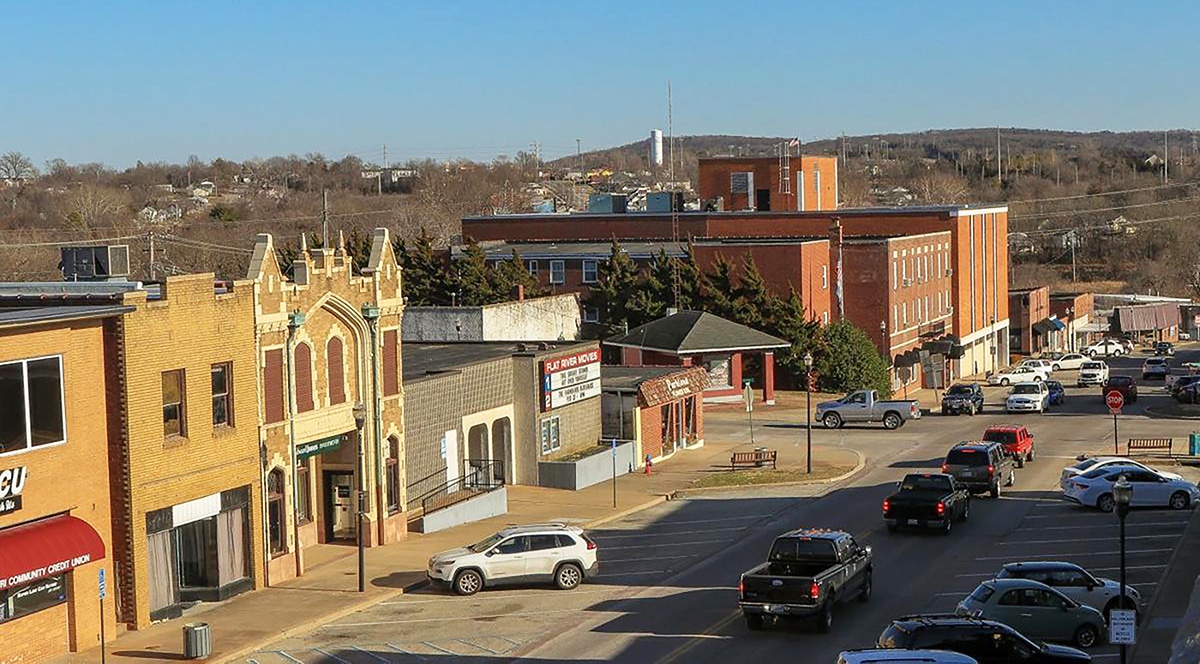
Park Hills: Four towns become one
Nestled in the heart of St. Francois County in the Ozark Mountains, Park Hills was once a cluster of small towns that were economically sustained by local lead mines. The area, known as the Lead Belt or the Mineral Area, has a long history of mining that began in the 1700s when large deposits of high-grade ore were found.
The St. Joseph Lead Company was established in 1864 and dominated ore production in the area. The company acquired a lead mine in nearby Bonne Terre and other local companies later. Towns were created around these areas. The St. Joe mines closed in 1972.
By the 1980s, many left the area to find other work. Businesses closed or moved.
In 1994, an unprecedented four-town merger of Flat River, Elvins, Esther, and Rivermines created the new town of Park Hills. The new name came from lifelong resident Mildred Lee who found inspiration in the area’s parks and the hilly terrain of the Ozark Mountains.
The city’s transformation began with new downtown sidewalks, curbs, and lighting installed at the time of the merger. The Downtown Park Hills Association was revived in 2006. Soon after, the farmers’ market started, and the Old No. 9 Garden Club teamed up to install planters resembling minecarts, the town’s historical staple, throughout downtown. Renovations on other buildings are already underway. The YMCA building underwent a conversion into updated apartments and RaeCole’s Coffee Bar on the lower level about six years ago; other improvements and new business additions have continued since then.
Ridge Events, an events management group, restored the historical taxicab station. A new permanent stage accommodates outdoor events. Banners of students’ winning artwork from an annual art contest decorate light poles, and city residents recently passed a bond issue to replace the 60-year-old town swimming pool with a new water park.
Unique, interesting businesses have opened in the town since then: the Old Mine House Bar & Grill, The Factory Diner, and RiverSide Grill, all sit-down, full-service restaurants; Copper Fox Contrived, a unique wooden flower shop; the Slauterhouse Craft Parlour, a pub serving craft beers; Scoops on Main ice cream shop; and The Magic Shoppe, home of the world-famous Ickle Pickle Magic Manufacturing Co.
“Seeing these people invest so much into a small community that needed so much attention and then watching their big dreams come to fruition—it’s simply heartwarming,” says Tamara Coleman, executive director of the Park Hills-Leadington Chamber of Commerce.
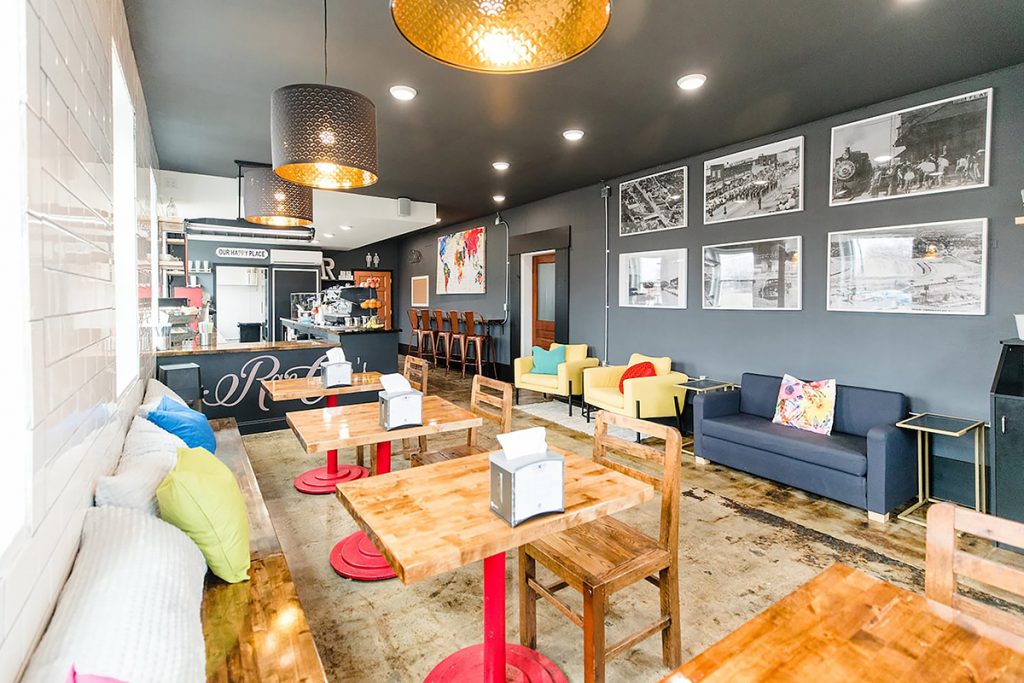
Chris Hulsey has been investing in Park Hills for nearly 15 years. He and his cousin Derrick and their wives, Ashton and Ashley, own Hulsey Properties. They have been purchasing and renovating buildings and creating new businesses. When they purchased the former YMCA building, their downtown revitalization efforts began. That building took about two years to complete as they learned what historic remodeling entailed.
About halfway through the first phase of that remodel, Ashton and Ashley had the idea to open a coffee shop, now RaeCole’s. That building, with its coffee shop and loft apartments, became the example needed to inspire rejuvenation.
“I believe we were a proof of concept for other business people in the area,” Chris says. “We just believed that if we built it, the town would support us, and they have to an incredible degree. We intend to continue until downtown Park Hills is a destination for folks to take a trip and spend the day with us.”
Travelers who visit Park Hills can see Mineral Area College, Missouri Mines State Historic Site, and St. Joe State Park, the state’s third largest park with 8,238 acres and best known for having the Midwest’s largest off-road vehicle area. There are also surrounding wineries, restaurants, and area attractions such as The Sand Trap Indoor Golf Club, The Space Museum and Grissom Center, and Bonne Terre Mine. The town is the birthplace of Darrell S. Cole, Medal of Honor recipient and namesake of the USS Cole, and brothers William and Tom Upton who were born in Esther and played Major League Baseball.
Park Hills is proof of how four declining towns worked together to create a revitalized city.
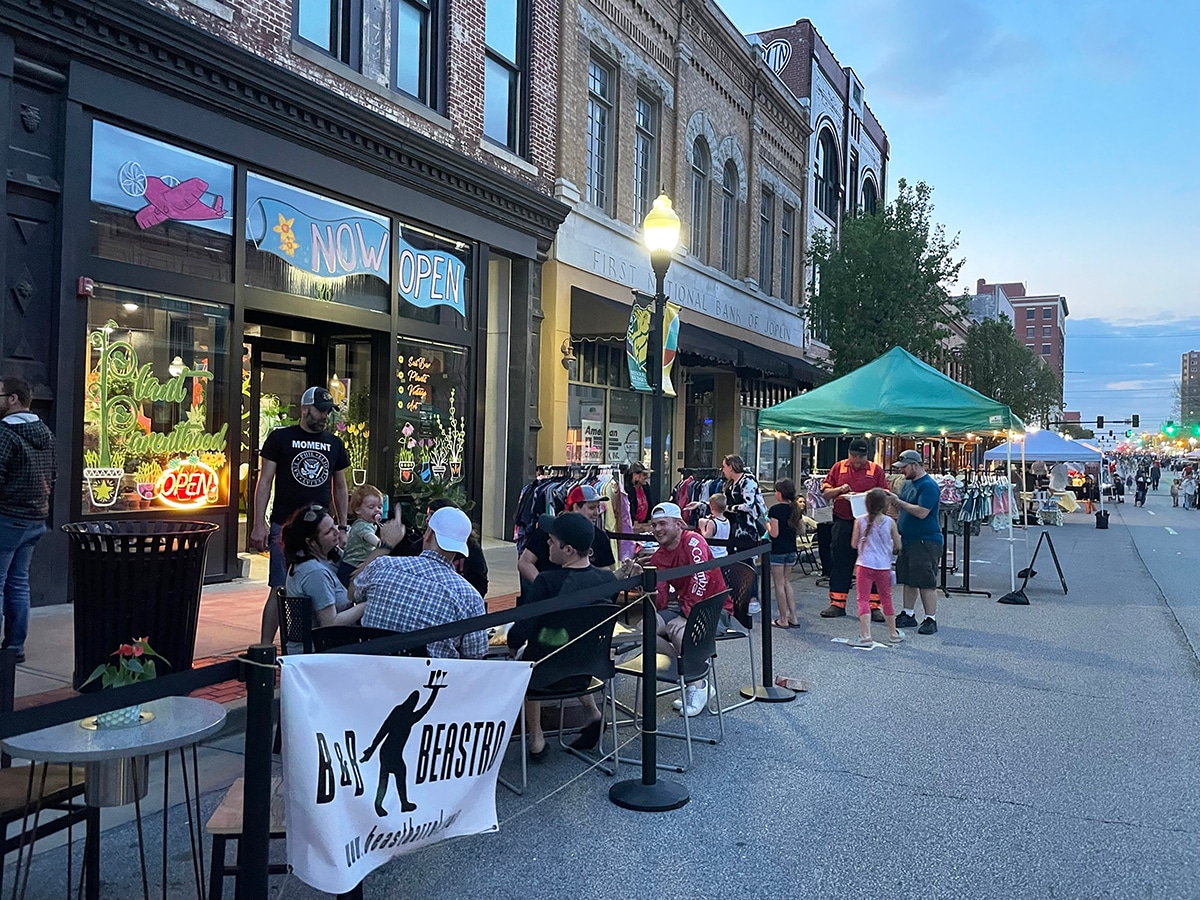
Joplin: Tornado tragedy led to rebirth
Joplin gained national attention when a devastating EF5 tornado ripped through the city on May 22, 2011. It was on the ground for more than 20 miles and nearly 40 minutes. More than a thousand people were injured and 161 killed. Homes and businesses were ruined, including the high school, hospital, and library. Joplin’s losses totaled close to $3 billion.
Prior to the tornado, Joplin’s city manager and city council had been working on initiatives to revitalize its downtown and many turn-of-the-century buildings. Projects such as the Frisco Building, the Columbia, and the Christman had all recently undergone renovations. Main Street streetscaping had been updated, and plans to restore the Union Depot were being discussed.
In 2007, with vacancy rates at 75 percent, a Third Thursday monthly art walk began by hosting artists in empty storefronts. Businesses began to see possibilities in the empty spaces. Then the 2011 tornado struck. Lori Haun, executive director of Downtown Joplin Alliance, says the devastating event understandably took the focus off the downtown revitalization for the next few years. Now, there is again renewed effort directed toward downtown.
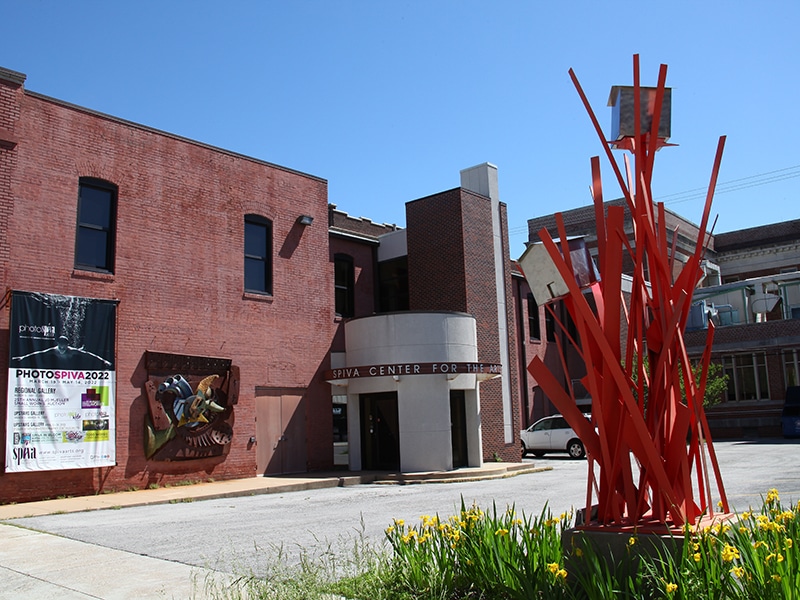
The Cornell Complex, a $17 million arts center with an outdoor venue, opens this fall. A new Jasper County Courts building, a $30 million project, also will finish later this year. Several developers will collectively add approximately 200 apartments to the downtown area in the next 18 months.
Third Thursday has grown from filling empty storefronts to filling the streets; the street festival now encompasses six blocks of Main Street. Downtown commercial buildings started filling up again. Now less than 10 percent of ground floor space is vacant in downtown Joplin. The area encompasses about 500 businesses, including everything from retail to salons to manufacturing.
“Fifteen years ago, downtown was a ghost town—the windows were coated with dust and the pigeons were the only occupants of most buildings,” Lori says. “As downtown has gained momentum, businesses now have to vie for storefront locations, and apartments are 100 percent full.” She says while there is still much to be done, “It’s awesome to see downtown isn’t empty any longer.”
Joplin is located in Southwest Missouri along historic Route 66. The city was home to poet Langston Hughes and it’s where Bonnie and Clyde sought refuge in 1933. A national monument honors American agricultural scientist George Washington Carver, who grew up near Joplin. Travelers will find plenty to do, including Wildcat Glades Conservation & Audubon Center with its walking trails and museum; Cunningham Park, which is dedicated to the victims and volunteers of the Joplin tornado; and Grand Falls, the largest continuously flowing natural waterfall in the state.
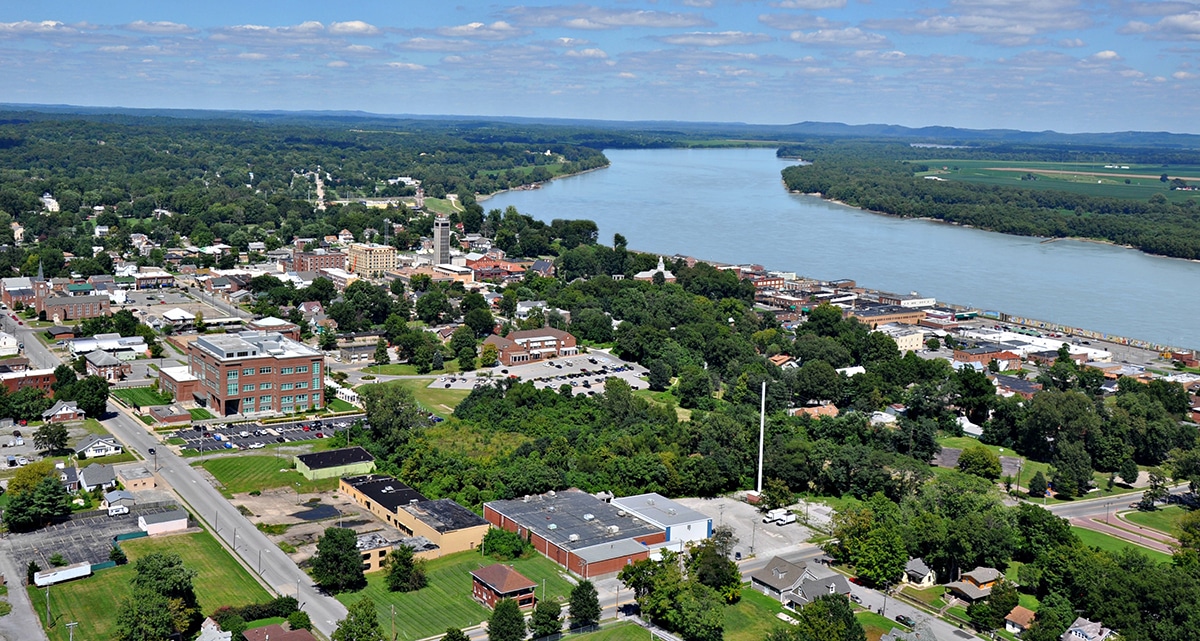
Cape Girardeau: Old Town Cape sparks growth
Although the population of Cape Girardeau is 39,000, the city estimates approximately 90,000 come to town daily to shop, attend school, or seek services.
The city, located about 100 miles south of St. Louis, is the economic center of rural southeast Missouri and is perched on the Mighty Mississippi. It was named after Jean D. Girardot, a French soldier who established a trading post in the 1730s about 60 years before Cape Girardeau was founded.
The city’s two colorful murals on the 15-foot-high floodwall that spans almost 18,000 square feet tells a visual history lesson. The Mississippi River Tales mural features 24 panels that specifically tell the history of the area. Chicago artist Thomas Melvin and several local artists completed the artwork in 2005. The Missouri Wall of Fame is a 500-foot-long mural that depicts 47 famous Missourians. This mural was painted in 1995 by local artist Margaret Dement. Major revitalization efforts began in 1999 with the founding of Old Town Cape, a nonprofit devoted to downtown rejuvenation.
In 2015, the downtown district and the heart of the original community, known as Old Town Cape, received the National Main Street Center’s Great American Main Street Award for making the town “an exciting place to live, work, play, and visit through implementing the Main Street Center’s comprehensive methodology for downtown revitalization.”
Through the Main Street Approach, volunteer committees work on four areas of revitalization: promotion, organization, economic vitality, and design. According to Old Town Cape Executive Director Liz Haynes, the community-driven organization represents 130 blocks of the city, with 4,500 residents and more than 300 businesses and organizations. In 2021 alone, 24 new businesses opened, creating 112 new jobs. The town benefited from more than $18 million in public and private investment last year.
New special events have been introduced to the downtown area, including Tunes at Twilight Friday evening concerts and Revivify, an annual fundraiser for Old Town Cape in October at Century Casino.
Cape Girardeau is home to Southeast Missouri State University and its new state-of-the-art River Campus, Old St. Vincent’s Church, museums, and historic homes like the Glenn House, which was featured in the second season of A&E’s popular Ghost Hunters series. Tourists can enjoy many free attractions in or near the area including the Trail of Tears National Historic Trail; the four-story pre-Civil War Bollinger Mill State Historic Site and Burfordville Covered Bridge, one of the state’s four remaining covered bridges; Cape Girardeau Conservation Nature Center; and Riverfront Bridge Park overlooking the Mississippi and Bill Emerson Memorial Bridge.
Retail stores such as The Indie House specialty gift shops, Annie Laurie’s two-story antique shop, and West Park Mall, plus restaurants such as Top of the Marq, Port Cape Girardeau, Katy O’Ferrell’s Publick House, and Mary Jane bourbon + smokehouse contribute to the steady growth in economic indicators such as sales and tourism.
With its rich history and 21st-century vitality, combined with cultural attractions, plenty of shopping, a state university, and numerous restaurants, Cape Girardeau has become a magnet for tourists.
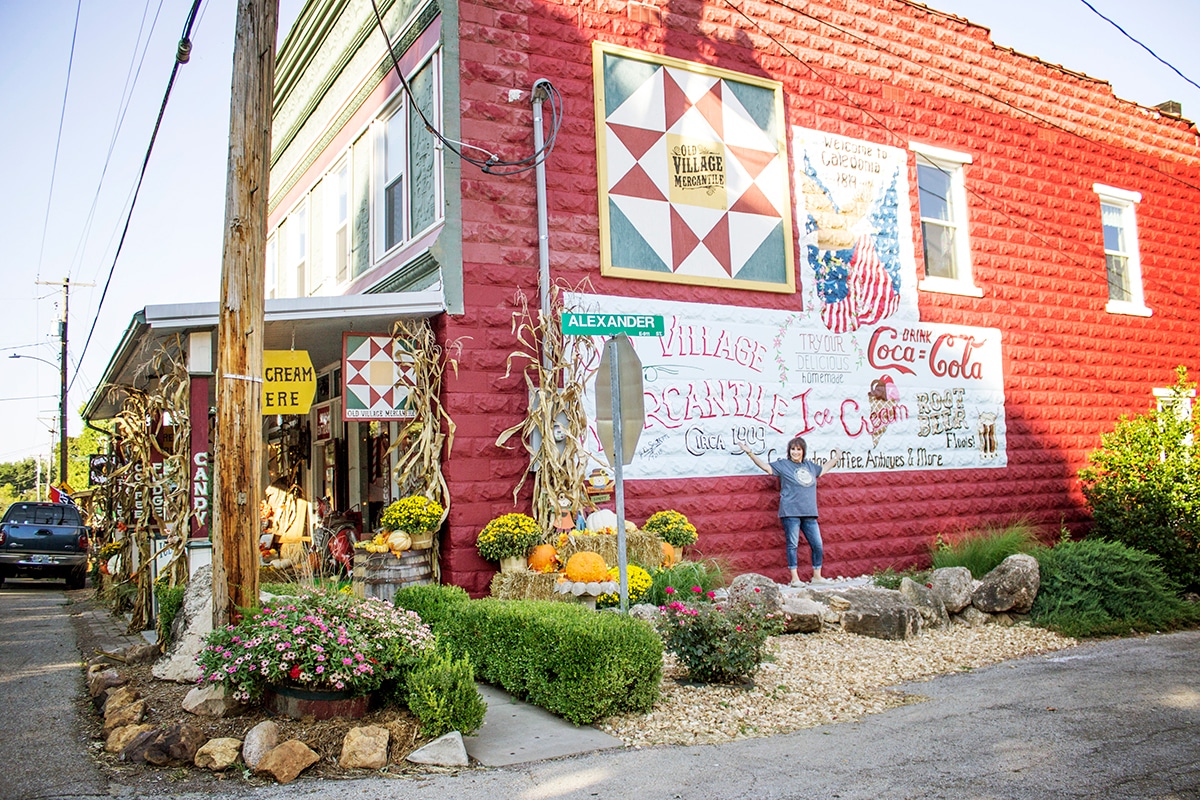
Caledonia: Tiny town dreams big
Caledonia is an example of a small town that has been revived and restored by its residents.
The village has a rich Scottish history. It was named after the Roman Empire’s Latin name for Scotland. The well established town has had a post office in operation since the 1800s, but Mayor John Robinson III says Caledonia has been evolving for the last 20 years. Longtime businesses closed as owners passed or moved away while others stepped up to open new businesses.
A local Caledonia Visitor & Business Association was formed in 2019 after the previous group dissolved a decade ago. The association supports and promotes the businesses in and around the village and sponsors events and activities in the community.
“I think what surprises folks is the way we’ve kept the old-time charm of the village, worked with property owners to maintain the older buildings but still offer services for tourists such as restaurants, lodging, and great retail shops,” John says. “Caledonia is a great step back in time with great amenities.”
The association recently approved three new businesses, including the Old Village Hot Dog Shoppe; Turning 3 Ranch, which will have western items; and Checo’s Mexican food truck, which obtained a peddler’s license to operate at various village events.
Nina Gilliam and her husband Steve have lived in Caledonia since 1998. When they moved to the village, there was only one business on Main Street: Carr House Antiques. They soon opened the Old Brick House B&B in the grand Ruggles Evans-Dent House (now under new ownership and operating as the Old Caledonian). Because there were no local restaurants, guests traveled to nearby Ironton for meals.
Three years later, Nina and Steve purchased the building that now houses the Old Village Mercantile after it remained vacant for more than a decade. The shop draws tourists in droves who come for the old-fashioned candy, fudge, coffee, ice cream, and antiques. The renovations of the historic village’s buildings, including the transformation of an old mechanic shop into a boutique, have inspired other new initiatives. Events like the monthly Vintage Market, Pumpkin Fest in the fall, and Chocolate Walk & Christmas Open House now bring large-sized crowds to town.
Local eateries have opened to serve residents and visitors. Caledonia, in southern Washington County, is listed as a National Historic District with 33 homes and businesses on the National Register of Historic Places. There are nearby attractions, including Elephant Rocks State Park, Battle of Pilot Knob State Historic Site, hiking trails, lakes, and a mountain bike park.
Although Caledonia is a tiny town, with a population that hovers around 130, there’s plenty of community effort and energy invested in the town’s success. Nina says that people used to say, “This could be a great town.” But now, 21 years later, they say, “This is such a great town.”
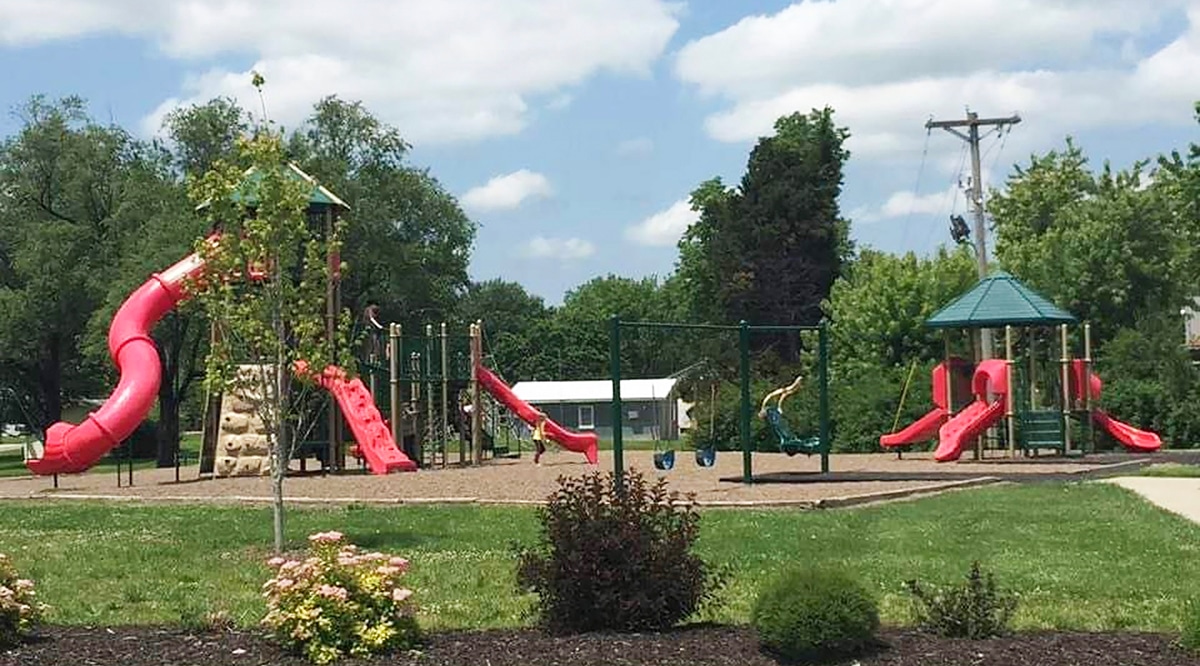
Bowling Green: They saved what they had before it was gone
The town was first settled in 1819 and became the county seat in the 1820s. Migrants from Virginia and Kentucky settled in the area, and so it was named after Bowling Green, Kentucky. But as many of the historic buildings aged, some owners were unable to afford the high maintenance costs, and two older buildings were scheduled to be demolished.
“This sparked conversations by many on what could be done about ensuring our downtown doesn’t end up as one big, empty lot and what could be done to revitalize and get people interested in being downtown again,” says Sarrah Gigous, director of Bowling Green’s Chamber of Commerce.
The Bowling Green Downtown Revitalization Committee, a sub-committee of the town’s Chamber of Commerce, was founded in February 2007. The group was made up of a mix of concerned citizens and Chamber members.
Since then, many improvements have been made. The town’s airport added new hangars, and the city park expanded. New businesses came into the Highway 61 and Business 61 junction, and the town square, anchored by the 1917 Pike County Courthouse, has attracted restaurants and retail shops, community organizations and services, and city and county government agencies. Large concrete planters for flowers have been added throughout downtown as part of the “Beautify Bowling Green” project. An industrial park was added in the northern part of the city. The completion of a new roundabout will take place by the start of the 2022-23 school year.
Mayor Jim Arico says the town’s population has expanded to include young families. There are also plenty of parks and lakes, plus many opportunities for outdoor fun like boating, fishing, camping, and hunting.
Travelers who visit Bowling Green may tour the two-story Champ Clark House, a historic home and museum located on the east side of town. It’s the home of the Hon. Champ Clark, congressman from Missouri’s Ninth District who presided as Speaker of the US House of Representatives from 1911 to 1919. The home is now a National Historic Landmark and regional museum. Just beyond Bowling Green is an Amish community consisting of talented craftspeople, woodworkers, and bakers. Bowling Green will celebrate its bicentennial in 2023.
Related Posts
Missouri’s Show Caves
With more than 6,400 recorded caves, including twenty show caves that are open to the public for guided tours, travelers and spelunkers around the world know Missouri as The Cave State.
Revitalizing Missouri Downtowns
Here’s how Missourians are working together to revitalize downtowns across the state.

